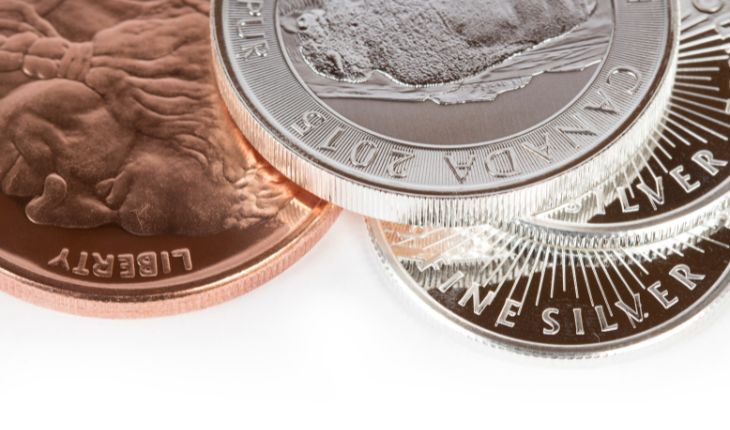From ancient civilizations to modern-day vaults, precious metals have always held a special place in human history. These gleaming elements are far more than just shiny ornaments or currency backups—they are a fusion of rarity, beauty, strength, and symbolism. Gold, silver, platinum, and palladium have been worshipped, traded, worn, and safeguarded for centuries. But their significance today goes beyond cultural and ornamental value—they’re at the heart of innovation, technology, sustainability, and even identity.
A Touch of Insight from Expert Market Research
According to Expert Market Research, the intrinsic value of precious metals is no longer defined solely by their appearance or scarcity. Their multi-functional role in sustainability, industrial development, and technological advancement has driven demand across the globe. EMR emphasizes how these metals are becoming increasingly important in green energy transitions, particularly in the use of silver and platinum in solar and hydrogen fuel cell technologies.
This pivot toward sustainability is redefining the way precious metals are sourced, refined, and utilized. As industries look to reduce environmental footprints, precious metals offer a promising path forward, balancing efficiency with ecological responsibility.
Why Precious Metals Are More Than Just Treasure
It’s easy to think of gold as something you store or silver as something you wear. But take a closer look, and you’ll see that these metals shape the very core of our daily lives. From satellites orbiting Earth to smartphones in our hands, precious metals are essential to powering technology, sustaining economies, and preserving wealth. They are resilient, conductive, non-corrosive, and stunning—all at once.
Their scarcity adds to their mystique. Unlike common metals, precious metals are rare finds in nature, often buried deep within the earth and requiring intricate processes to extract. That rarity is what makes them valuable—but it’s their utility that makes them irreplaceable.
Gold: More Than Just Glitter
Gold has enchanted humankind since the dawn of civilization. From Egyptian tombs to wedding rings, gold symbolizes purity, power, and permanence. It doesn’t tarnish, corrode, or fade. That’s why it’s not just a luxury metal, but also a staple in electronics, aerospace, and medicine.
Its malleability and conductivity make it essential in microcircuits and medical implants. It’s used in satellites because it reflects infrared radiation. In other words, gold isn’t just pretty—it’s incredibly smart.
Silver: The Workhorse of the Precious World
Silver might be less expensive than gold, but it is far more versatile. It has the highest electrical conductivity of all metals and plays a crucial role in everything from solar panels and electronics to antibacterial medical tools. While its shine makes it a favorite for jewelry and tableware, silver is increasingly being used in green technologies that could shape the future.
Its dual role as both a precious and industrial metal makes silver uniquely positioned as a bridge between elegance and utility.
Platinum and Palladium: The Silent Power Players
While gold and silver often steal the spotlight, platinum and palladium operate quietly behind the scenes—especially in the automotive and healthcare industries. Platinum is used in catalytic converters, laboratory equipment, and even chemotherapy drugs. Palladium is prized for its strength and resistance to heat and corrosion, especially in clean energy tech and electronics.
These metals are the unsung heroes, powering progress while remaining rare and valuable in their own right.
Symbolism and Emotion: Precious Metals in Human Culture
Beyond their utility, precious metals carry powerful emotional and symbolic meanings. Gold represents wealth and success; silver symbolizes purity and clarity; platinum evokes exclusivity and strength. They are used in rituals, gifts, declarations of love, and moments of triumph.
There’s something inherently human about our attraction to these metals. They don’t just reflect light—they reflect dreams, milestones, legacies, and beliefs. Whether it’s a wedding ring passed down through generations or a gold medal symbolizing victory, the emotional weight these metals carry is timeless.
A New Era for the Oldest Treasures
As environmental awareness grows, the world of precious metals is evolving. Ethical sourcing, recycled metals, and eco-conscious mining are becoming central to the narrative. Consumers and industries alike are demanding transparency about where and how these metals are obtained.
Technological advancements in metal recycling and sustainable mining practices are helping to reduce the environmental toll of precious metal extraction. And as demand for green technologies rises, the importance of responsible sourcing becomes all the more urgent.
The Modern-Day Connection: Precious Metals and You
You don’t have to be a collector or investor to have a relationship with precious metals. You carry them in your phone, wear them as accessories, benefit from them in your car, and rely on them in your health treatments. They’re deeply embedded in the fabric of our modern lifestyle—even if you never consciously notice them.
This quiet omnipresence is what makes precious metals so extraordinary. They are at once ancient and futuristic, decorative and functional, symbolic and scientific. They’ve stood the test of time not because they’re rare, but because they are relevant—more now than ever.
Shining On Through Time
Precious metals are the silent yet shining threads woven through the story of humanity. Their value is not just in their luster, but in their versatility, resilience, and emotional power. As the world moves forward, our connection to these metals will only deepen, bridging the gap between the ancient and the future.
Whether you admire them, invest in them, or unknowingly rely on them, precious metals continue to reflect not just our past—but the brilliance of what’s yet to come.
